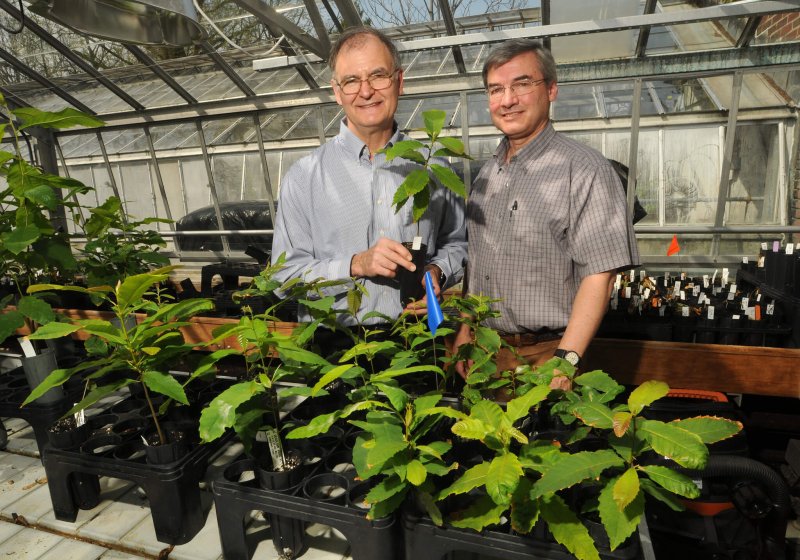Two new studies on the environmental impact of transgenic American chestnut trees provide evidence that the trees have no harmful effects on germinating seeds, beneficial fungi, or larval frogs that are dependable indicators of environmental quality.
The findings were published by researchers at the New York College of Environmental Science and Forestry (ESF), where scientists have been working for 29 years to restore the valuable species after it was nearly wiped out by a pathogenic blight in the 20th century. Now that they have developed a process for growing blight-tolerant trees, ESF scientists have turned their attention to assessing how these trees could affect the environment.
…
“Since we were making an extremely small change to the tree as compared to other, more traditional breeding methods, we didn’t expect to see any differences between the wild, blight-susceptible trees and the blight-tolerant American chestnut trees other than now being able to coexist with the invasive pathogen. These and other experiments support these conclusions,” said Professor William Powell, a co-author on both studies and director of ESF’s American Chestnut Research and Restoration Project.
The ESF technique neutralizes the pathogen’s main weapon by using a common detoxifying enzyme found in many plants. When this single gene is added to the chestnut tree’s approximately 38,000-gene genome, the tree can withstand an attack by the blight.
Read full, original article: Studies: Transgenic American Chestnut Trees Show No Ill Effects on Seeds, Fungi or Larval Frogs































